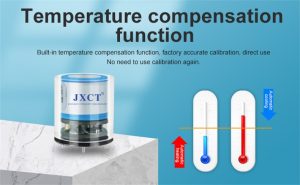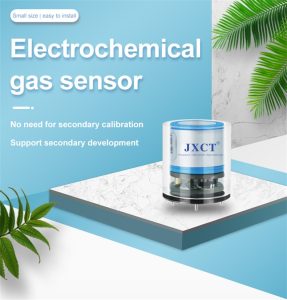Air pollution has become a global concern, with its detrimental effects on human health and the environment. To effectively combat this issue, accurate monitoring and assessment of air quality are essential. Gas sensors play a pivotal role in this process by detecting and quantifying harmful gases present in the atmosphere. This article explores the significance of gas sensors in air quality assessment, their various types, and their application in different sectors.
Understanding Gas Sensors:
Gas sensors, also known as gas detectors, are electronic devices designed to detect and measure the concentration of specific gases in the air. These sensors operate based on various principles, including electrochemical, catalytic, infrared, and metal-oxide semiconductors. Each type of sensor is suitable for detecting particular gases, making them versatile tools for air quality assessment.
Importance of Air Quality Assessment:
Air quality assessment is crucial for several reasons. Firstly, it helps in identifying and monitoring the presence of harmful gases such as carbon monoxide (CO), nitrogen dioxide (NO2), sulfur dioxide (SO2), ozone (O3), and volatile organic compounds (VOCs). Secondly, it provides insights into pollution sources and trends, aiding in the development of effective mitigation strategies. Lastly, air quality assessment helps in evaluating the efficiency of pollution control measures and policies.
Applications in Environmental Monitoring:
Gas sensors find extensive use in environmental monitoring programs. They are deployed in fixed monitoring stations, where they continuously measure pollutant levels and transmit real-time data to relevant authorities. This data helps in determining air quality indices, issuing warnings, and informing the general public about potential health risks. Gas sensors also facilitate the identification of pollution hotspots and allow for targeted interventions.
Industrial Applications:
Gas sensors play a vital role in industrial settings to ensure worker safety and comply with regulations. They are used to monitor the presence of hazardous gases in manufacturing plants, mines, chemical facilities, and oil refineries. Early detection of gas leaks or abnormal gas concentrations enables timely evacuation, preventing accidents and potential health hazards. Continuous monitoring also helps industries maintain compliance with emission standards.
Indoor Air Quality Assessment:
Indoor air quality (IAQ) significantly impacts human health and comfort, considering people spend a significant amount of time indoors. Gas sensors are employed in homes, offices, schools, and hospitals to assess IAQ. They detect gases released from building materials, furniture, cleaning products, and combustion sources. Effective IAQ assessment helps in identifying and mitigating factors that can cause respiratory issues, allergies, or other health problems.
Vehicle Emission Monitoring:
Transportation is a prominent contributor to air pollution, and gas sensors play a crucial role in monitoring vehicle emissions. They are integrated into exhaust systems or retrofitted into vehicles to measure pollutants like carbon dioxide (CO2), nitrogen oxides (NOx), and particulate matter (PM). This data aids in evaluating the efficiency of emission control technologies, enforcing emission standards, and implementing measures to reduce vehicular pollution.
Emerging Technologies:
Advancements in gas sensor technology have led to the development of miniaturized, portable, and low-power sensors. These sensors can be integrated into wearable devices, smartphones, and Internet of Things (IoT) platforms. The emergence of such technologies enables individuals to monitor personal exposure to pollutants, fostering awareness and empowering individuals to make informed decisions regarding their environment and daily activities.
Conclusion:
Gas sensors play a fundamental role in evaluating air quality, enabling effective pollution control strategies and safeguarding human health. From environmental monitoring to industrial applications, indoor air quality assessment to vehicle emissions monitoring, gas sensors provide valuable data for policymakers, researchers, and individuals. As technology continues to advance, the development of more sensitive, accurate, and cost-effective gas sensors will further enhance our ability to combat air pollution and create healthier living environments for present and future generations.
 : +86 155 8830 2704
: +86 155 8830 2704 : jxdziot@gmail.com
: jxdziot@gmail.com
